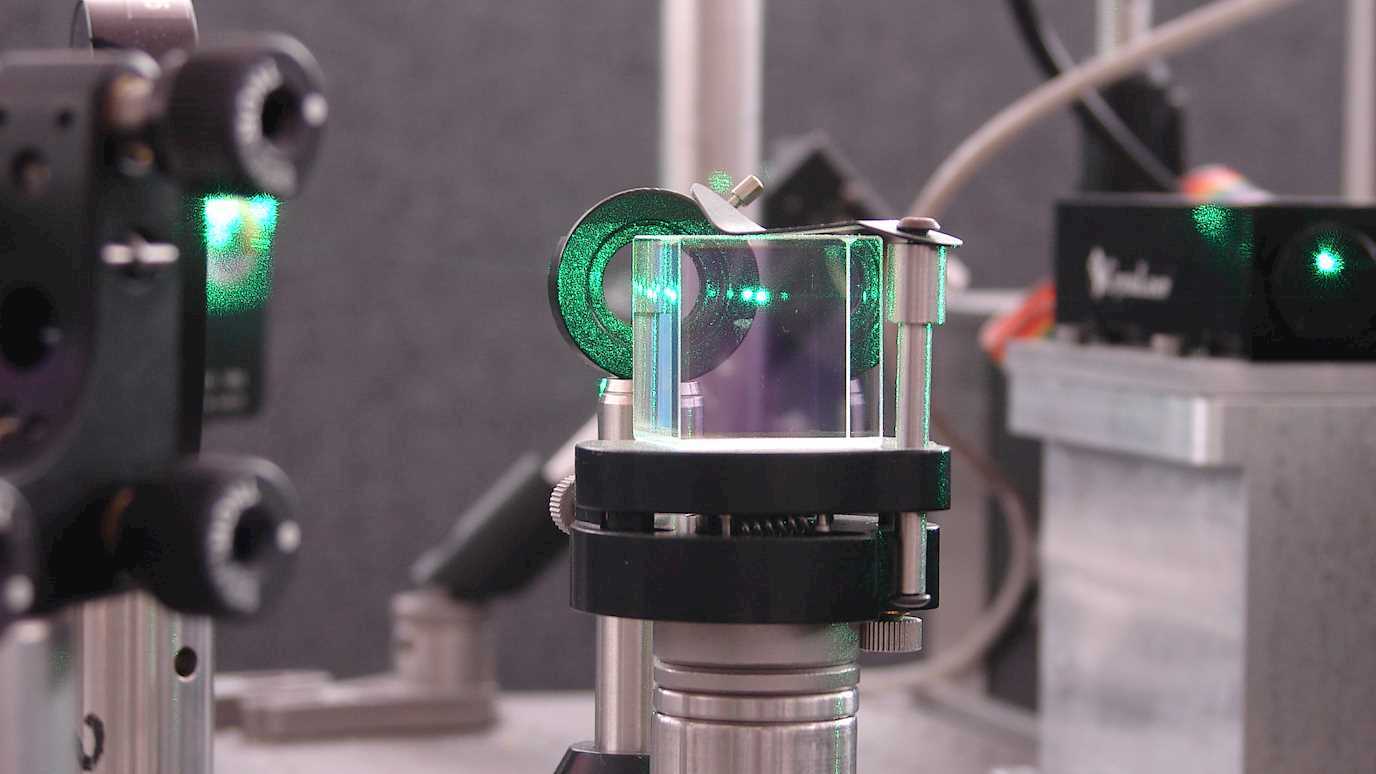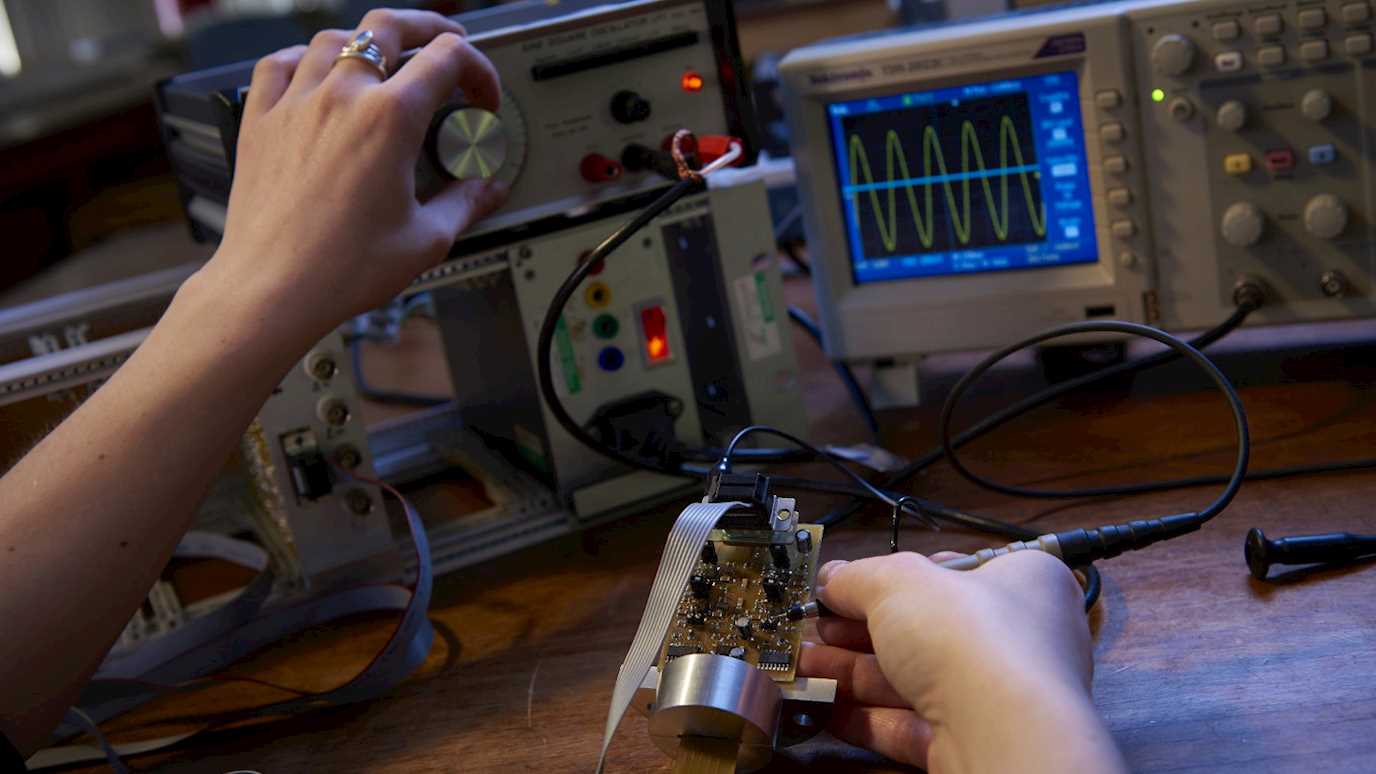Microwave Photonics and Sensors (MPS) research group is focused on Microwave Photonics experimental techniques to maximize the Spurious-Free Dynamic Rage (SFDR) of a Radio Frequency (RF) on fiber transmission systems. The group has extensive expertise on microwave photonic signal processing, including up conversion and down conversion of microwave signals, developing new techniques for eliminating intermodulation distortions products, removal of spurious, amplification and photonic filtering of RF over fiber optic communication links for future 5G/6G and beyond wireless communication, aerospace, radar and satellite communication system applications.
Focus & Expertise
The Microwave Photonics and Sensors (MPS) Group is focused on developing theoretical, simulations and experimental techniques for investigation of the followings:
- All-optical processing and controlling of RF signals.
- Microwave photonic signal processing by exploiting intrinsic nonlinear effects in Optical Fibre for future Radar and Wireless communication Systems.
- Microwave Photonic Downconversion/upconversion with high conversion efficiency using novel configuration schemes over a wide range of frequencies with high SFDR, low noise and suppression of high-order harmonics at any spectrum.
The MPS Group has developed and demonstrated experimentally non-invasive wearable body sensors for continuous monitoring and measuring of key health parameters such as:
- Blood Pressure.
- Blood Oxygen Saturation (SpO2),
- Body Temperature.
- Glucose Levels in Blood
In addition to this the MPS has extensive expertise on designing Biosensors, photonic sensors and soil sensors for medical and environmental applications, including Brillouin Scattering for imaging applications.
Aerospace Applications
In civilian aerospace systems there is increasing demand for higher information capacity links to both ground stations and space based satellite networks for a wide range of applications including: on-board “Wi-Fi”, passenger and crew telecommunication and data communication, airframe and engine health monitoring systems, air traffic control communication, GPS and continuous airplane status and location monitoring.
Similarly in military aerospace live video feeds from the aircraft in addition to the continuous monitoring and control of on- board systems are envisaged. Photonics being largely Radio Frequency (RF) “blind”, hold the key prospect of combining multiple RF radios into a single architecture and antenna either through processing in parallel or serially in time. RF analogue photonic linking is a very promising technique due to the low insertion loss, system integration compactness, huge bandwidth capacity, security and immunity to EMI.
Collaborations
The Microwave Photonics and Sensors Group is collaborating closely with leading national and international industries and universities, working on the above stated research topic. Due to our close collaboration with industry, several patents have been filed jointly with the support from the industry. This page lists some, amongst other, areas of current interest as well as areas of opportunity for future work.
The group is working closely with physics, biosciences, materials, computer sciences and information security groups here at Royal Holloway, London University.
How to join us
To apply for an MSc by Research or PhD within the Microwave Photonics and Sensors, please email the Head of Group, Dr Haxha at shyqyri.haxha@rhul.ac.uk with details about your research interests as well as a summary of your academic qualifications (a brief one to two page CV will be useful) and if you are self-funded or require funding. After you have liaised with Dr Haxha, you will be able to register an account on Royal Holloway Direct to formally submit your application.
More details on the application process can be found here.
For more information on postdoctoral, fellowship and visiting opportunities, please email the Head of Group, Dr Haxha at shyqyri.haxha@rhul.ac.uk with your CV and a brief statement of your research interest and career aspirations..
Group members
Dr. Taimur Mirza
Dr. Taimur Mirza is a Research Assistant in Microwave Photonics at the Royal Holloway University of London since September 2020. He received his BEng (Hons) in Electrical and Electronics Engineering and MSc (Hons) in Embedded Intelligent Systems from the University of Hertfordshire in 2013 and 2014, respectively. In 2020, he received his PhD on “Suppression of nonlinear distortion in the Radio-over-fiber systems” from the Royal Holloway University of London. He has extensive experience of working on various research projects funded by Industrial and government bodies such as National Aerospace Exploitation Programme. He has also been involved in teaching and project supervision to undergraduate and postgraduate students at the University of Bedfordshire and the Royal Holloway University of London. His research expertise and interests are in Photonics, Optical communication, and Power & control systems.
Honorary staff
Prof. Ian Flint - Lead Photonics Engineer at Leonardo MW (visiting Professor)
Prof. Ian Flint is a visiting Professor at RHUL. Prof. Flint received his BSc in Physics with Maths from Reading University, in 1975. In 1982, he received his PhD from Reading University on “The electron spin resonance of low temperature irradiated diamond”. He was the first to identify the role of self-interstitials to enhanced diffusion of impurities. He is a physicist, previously working for 10 years in the Universities of Reading (1978 year to 1982), Hull University (from 1982 to 1983) Oxford University (1983 to 1985) Bath University (1985 to 1989) and on optoelectronics and Solid State physics.
In 2004 Prof. Flint received BAE Systems Chairman’s Gold individual award for a photonic microwave filter design. Prof. Flint is inventor of Seventeen filled patents for three different companies in the last 20 years. He has a wide range research expertise and development roles in university and industry. Initially working in solid state physics and then integrated photonics. On moving to industry his work allowed first commercially back-illuminated CCD devices. These back-illuminated processes allowed major systems like the Hubble space telescope (the current WFC3 devices). These devices are sixteen times more sensitive in the blue and UV wavelength than the previous device. He is the inventor of large number of patent filing awards within Marconi Optical Components, Selex (Leonardo). Marconi, E2V, BAE systems. Patents are filed in RF sampling and RF down conversion, Laser Hybridisation; Laser machined waveguides; Integrated Optical Isolators Micro Mechanical devices; Blowing fibre into coil winding; Monitoring surface properties; In situ waveguide deposition; Microwave photonic filters; Multi Input receiver, RF Sampling; Simulated Brillouin Scattering, Imaging Devices and Systems..etc.
Contact details:
Microwave Photonics and Sensors
Department of Electronic Engineering
School of Engineering, Physical and Mathematical Sciences
Royal Holloway, University of London, Egham, Surrey, TW20 0EX, United Kingdom
Tel: +44 (0)178444 3183
Email: Ian.Flint@rhul.ac.uk
Selected publications:
- F. AbdelMalek, W. Aroua, S. Haxha and I. Flint. Light-switching-light optical transistor based on metallic nanoparticle cross-chains geometry incorporating Kerr nonlinearity. Annalen der Physik, vol. 528, issue 7-8, pp. 560-570, 2016.
- J. Sarma. I. Flint, Electrically variable couplers for integrated optical circuits. IEE Proceedings Vol 135 Pt.J No 3 June 1988 p268-275
- I. Flint and J.N. Lomer.The formation of E.S.R centers A-2 and A-3 in diamond, electron irradiated below 30K and an interpretation in terms of self di-interstitial complexes. Physica B&C Vol 116 B+C No1-3 pl83-6 Feb 1983
- I.T.Flint , H.J Francis, A.D.Holland , A.Wells, X-ray sensitive CCD’s from 0KeV to 1MeV, The 10th Symposium on Photoelectronic Imaging devices 1991. Imperial College university of London 1991. IOP conference series ISBN 0-85498 -411-9pp 281
Selected Patents:
- Laser Hybridisation GB0124916.8 (Marconi /Bookham)
- Laser machined waveguides GB 0126560.2 (Marconi/Bookham)
- Integrated Optical Isolators GB0124355.9 (Marconi/Bookham)
- Micro Mechanical devices GB 001852.7 ( company EEV)
- Blowing fibre into coil winding GB 0106763.6 (Marconi/Bookham)
- Monitoring surface properties GB 0106792.5 (Marconi/Bookham)
- Insitu waveguide deposition GB 0106794.1 (Marconi/Bookham)
- Microwave photonic filters GB 05270013.5 (SELEX/ BAE Systems)
- Multi Input receiver GB 0407568.5 (SELEX/ BAE Systems)
- Reduction of Intermodulation Distortions: GB1900552.9.
- A method of driving an MZM, an SSBs post manufacture GB1821175.5
- Distortion removal with stimulated (dynamic) Brillouin scattering GB1717084.6
Microwave Photonics filtering for 5G/6G and beyond spectrum bands
This project will focus on Microwave Photonics developing experimental techniques for Radio over Fiber (RF) transmission systems where photonic filtering systems of RF Interference (RFI) will be developed at 5G/6G and beyond spectrum bands. The system under study will be focused on all-optical processing and controlling of RF signals for future communication systems using novel practical configuration schemes over a wide range of frequencies with high SFDR, low noise and suppression of high-order harmonics. Novel techniques will be investigated to design and optimise transmission of radio signals over fibre optic modules with desired power consumption, and reduced complexity: Project supervisor Dr Shyqyri Haxha. Project reference: SH1
Autonomous vehicle using LIDAR exploring security vulnerabilities
This project involves building an autonomous vehicle model which uses LIDAR for the purpose of exploring security vulnerabilities in the future automotive self-driving industry. Use Microwave photonic devices/systems to create disruption attempts, then propose and explore possible solutions from testing results. Furthermore, cyber-security in this industry will be explored by means of research and development regarding different technologies. Namely, keyless vehicles, vehicle networking and the modern CAN bus along with their weaknesses could be looked at in hopes of supporting advancements in security, by bringing together or possibly even creating new technologies: Project supervisor Dr Shyqyri Haxha. Project reference: SH2






















